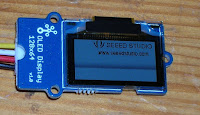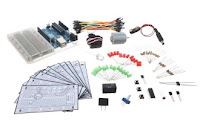Mastering the I2C bus - review
I just got my copy of Mastering the I2C bus - an excellent book, the first in Elektor.com's LabWorx series. The author, Vincent Himpe, really knows his stuff. I've been using the I2C bus since I started with PIC micros back in the last millennium, but I learned something on just about every page of the book. The book covers the background and history of the I2C bus and explains it from hardware and software perspectives. There's a useful chapter on FAQs, and the book also covers debugging. The author makes a good selection of commonly used devices, and explains how to use them. The last part of the book describes a series of I2C project boards, (available from an Elektor partner) and covers their purpose, their design and application. You're encouraged to download code from a dedicated website. I had a problem getting on the site yesterday, but after a fast response from Elektor I now have access to the software and PCB layouts. We'll be supporting I2C o...






